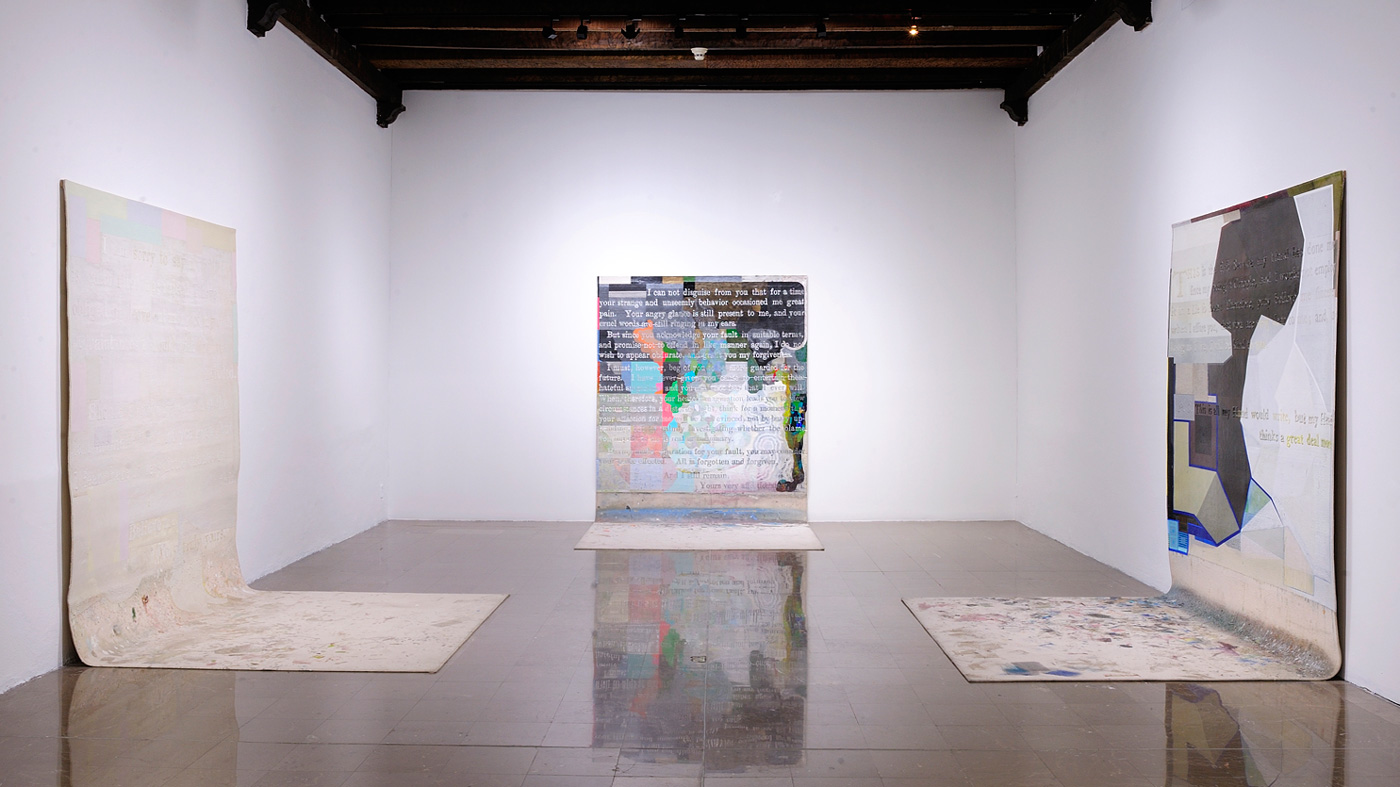Models
2003 – 2007

Dear ___________,
I found the old letters—read them through and remain somewhat puzzled. They remind me of today’s form letters that demonstrate a certain sophistication and are adopted by the corporate lackey to provide others with an apology, a rejection, a reminder; or by the illiterate looking for proof that the passage of time will not erase their voices. I’d like to know if these letters ever expressed personal passions or were always meant as conventional molds to be filled out by others. I wonder if, at the time that they were written, the author suspected that her own presence would not remain concealed, that her services would carry forth multiple vestiges of ulterior meanings. I ask myself, finally, about the emotions that fail to be conveyed by the scribe’s formulaic wording. Perhaps what’s most sincere about these letters is that which remains beyond the confines of the text, like the blotches that accidentally fall onto the floor when the painter subjects a canvas to his or her whims; the residual stains of a presence that remains palpable, like a ghost rattling the chains of human intuition.
Eagerly awaiting news from you,
Pamela
—Pamela Echeverría, 2008
Modernist critics glorify “literalness” as the bearer of truth in the plastic arts, complemented by the idea that literature in painting—literary painting—detracts from the supposedly progressive drive toward literalness. My paintings on carpeting in Models incorporate texts from letters in old epistolary manuals, the sort that began to circulate in Europe in the sixteenth century. The letters I selected resort to outmoded forms of address that, once recontextualized in paint, point to diverse modes of responsiveness that paintings can provoke in their viewers. The epistolary form exploits devices and conventions so that specific relations may take place with specific readers. A letter may be soliciting, conciliatory, complaining, thankful, clarifying, threatening, and so forth. Painters also make use of particular technical and contextualizing strategies in order to involve the viewer in specific ways—seducing (Vermeer), confronting (Bacon), questioning (Manet), notifying (Stella), or proposing (Morandi). The analogy ends where the message of the letter rests on the acknowledged use of a rigid convention, while the effect of a worthy painting makes convention a malleable and fluid medium that playfully generates a slippery exchange with the viewer.
—Yishai Jusidman
src="../wp-content/uploads/yishai-jusidman-models-1.jpg">
src="../wp-content/uploads/yishai-jusidman-models-2.jpg">
src="../wp-content/uploads/yishai-jusidman-models-3.jpg">
src="../wp-content/uploads/yishai-jusidman-models-4.jpg">
src="../wp-content/uploads/yishai-jusidman-models-5.jpg">
src="../wp-content/uploads/yishai-jusidman-models-6.jpg">
src="../wp-content/uploads/yishai-jusidman-models-7.jpg">
